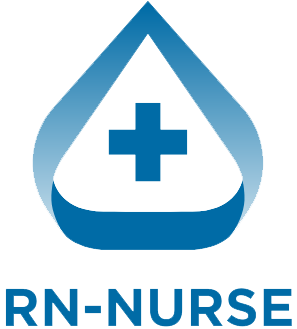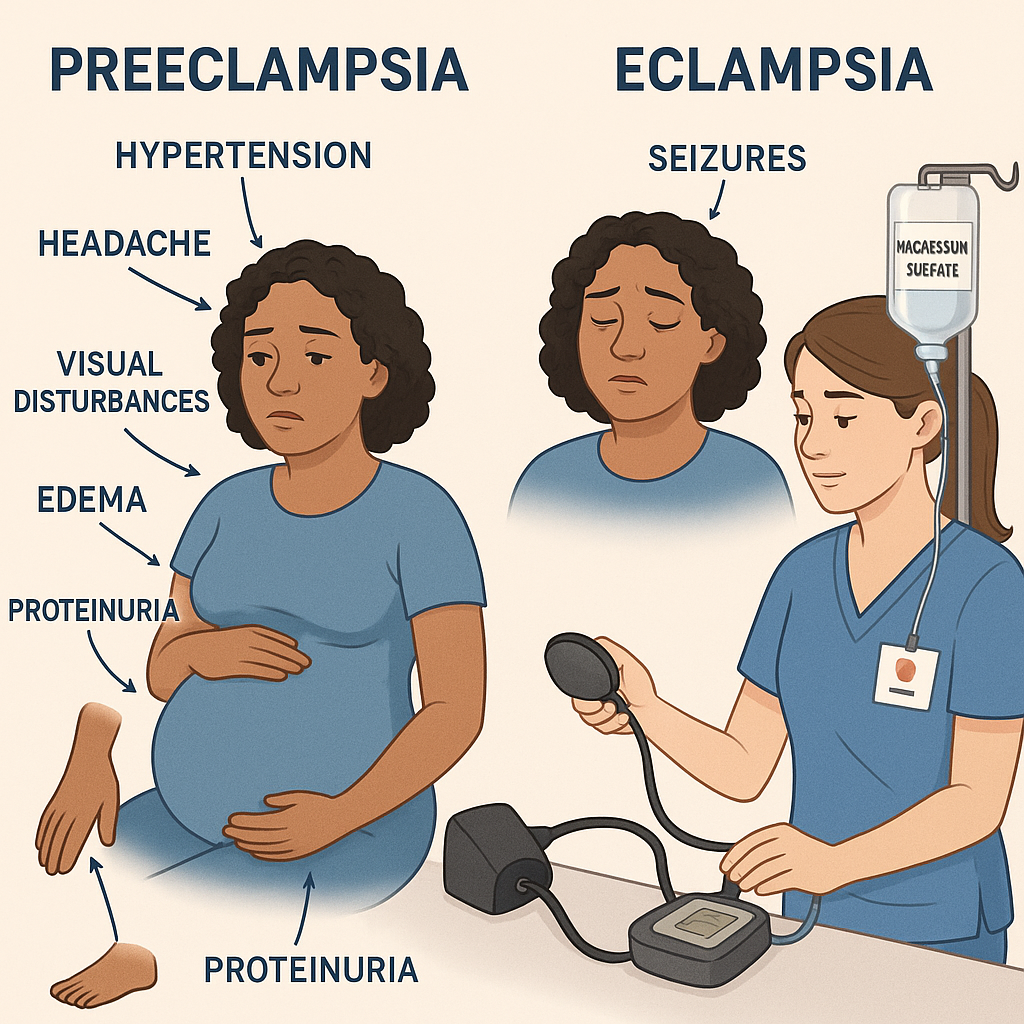Preeclampsia and eclampsia are critical hypertensive disorders that every registered nurse (RN nurse) and nursing student should understand. These conditions can become life-threatening for patients and their families, making them highly tested on the NCLEX and essential in any nursing bundle. Let’s break them down simply and focus on how you can prioritize nursing care in these situations.
🩺 What is Preeclampsia?
Preeclampsia is a pregnancy complication usually seen after 20 weeks gestation. It is marked by new-onset hypertension (blood pressure ≥140/90) plus proteinuria or signs of organ damage.
Key features:
- High blood pressure
- Protein in urine
- Edema (especially hands and face)
- Headache
- Visual changes
- Right upper quadrant pain (liver involvement)
The exact cause isn’t fully understood, but it’s thought to involve abnormal placental blood flow and inflammation.
⚡ What is Eclampsia?
Eclampsia is the progression of preeclampsia that leads to seizures. It is a true obstetric emergency.
Key features:
- Same symptoms as preeclampsia
- PLUS new-onset tonic-clonic seizures
- Can result in coma or maternal/fetal death if untreated
As a nurse, you must act fast to protect both the patient and the fetus.
🟡 Differences at a Glance
| Preeclampsia | Eclampsia | |
|---|---|---|
| BP | High | High |
| Proteinuria | Yes | Yes |
| Seizures | No | Yes |
| Risk | Progression to eclampsia | Maternal/fetal compromise |
NCLEX tip: If a pregnant patient has a seizure, think eclampsia until proven otherwise.
🩹 Nursing Care for Preeclampsia
As an RN nurse, your role is to keep the patient safe and prevent progression to eclampsia:
✅ Monitor blood pressure closely
✅ Assess for worsening symptoms (headache, vision changes, epigastric pain)
✅ Check urine protein levels
✅ Educate on warning signs
✅ Administer antihypertensive meds as ordered
✅ Provide a calm, quiet environment
🩹 Nursing Care for Eclampsia
If a seizure occurs, the nurse must act quickly:
✅ Maintain airway
✅ Turn patient to side (reduce aspiration risk)
✅ Pad side rails
✅ Administer oxygen
✅ Give magnesium sulfate as prescribed
✅ Monitor fetal heart rate
✅ Prepare for emergency delivery if status deteriorates
After the seizure, document:
- Seizure duration
- Interventions
- Patient response
NCLEX note: magnesium toxicity is a risk with mag sulfate — watch for absent reflexes, respiratory depression, and low urine output.
💡 NCLEX Reminders
👉 Magnesium sulfate = seizure prevention
👉 Calcium gluconate = antidote for mag toxicity
👉 Seizure → think eclampsia
👉 Quiet environment to reduce triggers
👉 Frequent vital signs and reflex checks
Add these high-yield points to your nursing bundle for quick review!
📝 Cheat Sheet for RN Nurses
✅ Preeclampsia = HTN + proteinuria, no seizures
✅ Eclampsia = HTN + proteinuria + seizures
✅ Nursing priorities: safety, monitoring, medications
✅ Emergency preparedness for seizures
✅ Key NCLEX warning signs
This simple breakdown will help any nurse feel more confident both on the floor and during the NCLEX exam.

